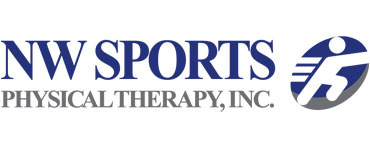Kevin Kane PT, DPT- Hilliard,OH
Everyone from the weekend warrior to professional athlete knows the value of strengthening to increase performance. However, how much thought is given to moving correctly or using the right muscle group at the right time? You can be the strongest person in the world, but if you aren’t using your strength in the right way then you are doing yourself a disservice.
Everyone knows the value of coaches when we were learning to play sports as a kid, but who is coaching us now that our t-ball days are a distant memory? The human body is a vast puzzle of muscles, bones, ligament and tendons that work together to get us up off the couch and moving, but we also need a good “computer” to tell us what to move and when. That computer is our nervous system, and the software we use is called neuromuscular control.
Just a simple task such as squatting to pick up laundry from the floor can be done in countless different ways. For example, you can keep your knees straight and bend through your back. Or maybe you use what is called a “quad dominant” pattern where you bend your knees excessively and do not use your hips correctly. You can keep your back straight, bend through your hips and keep your knees behind your toes and lift the laundry basket. Each of these movement patterns will help you lift the basket; however, moving incorrectly can lead to overuse injuries, joint degeneration, and other stresses and strains no one wants to encounter.
This same idea carries over to athletic events as well. Maybe your goal is to complete a 5K. With proper training, you can get your cardiovascular system in shape to allow you to set your personal record, but is your form maximized for efficiency and injury prevention?
One of the many changes in healthcare recently has been a shift from focusing only on strength and range of motion (ROM) to looking more at function and movement. Strength, ROM, flexibility and mobility always will be important, but proper movement mechanics may be the most crucial aspect of any rehabilitation or training program. It is now known that simply strengthening a muscle does not make you use it more during the day. In order to fix a flawed mechanic you need to retrain the brain to tell the muscles to move at the right time and in the right manner. This concept is called many names, but the most simple is neuromuscular re-education. Simply put, you need to train movement, not muscle.
Trained individuals such as physical therapists look at your overall movement; they identify the improper function, determine the limitation of the function, and then develop an individualized program for you. With time and (likely) a little sweat and frustration, you will be stronger and will move better and more efficiently. Improving movement mechanics has been shown to decrease the incidence of injury and improve athletic performance.
One example where poor movement patterns appear to be correlated with injuries is ACL tears in female athletes. Compared with their male counterparts, females tend to run, jump and land with more femoral rotation (thighs are turned in) and genu valgum (“knock kneed”). This puts more stress on the ACL and can lead to rupture. Strengthening combined with neuromuscular re-education and movement training has been shown to have a positive outcome with respect to decreased injury rates.
